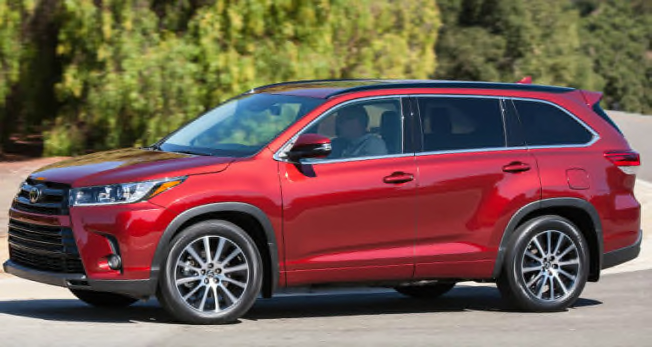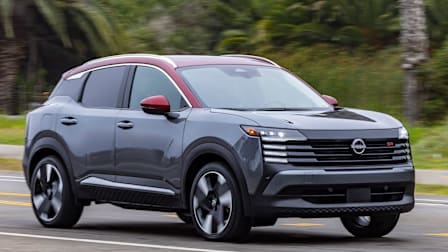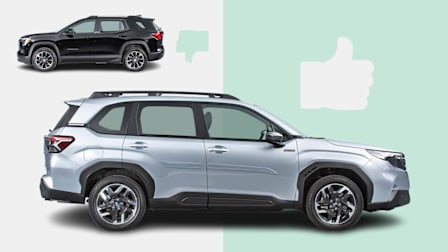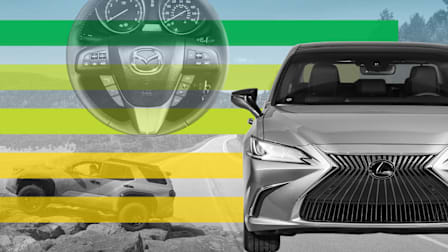How to Buy a Used Car Now
Our tips will help you find a reliable pre-owned vehicle at a price you can afford

Used cars—and their lower prices—are becoming more attractive amid high interest rates, high prices for new cars, and market turmoil due to uncertainty regarding tariffs on new cars and car parts. At the same time, supply shortages that slowed new-car production a few years back have led to fewer used cars being available now, especially when it comes to the newer, lower-mileage examples that are in demand. These challenges make it more difficult to get a deal on a used vehicle.
Consider These Key Factors
Safety Equipment
In recent years, a growing number of new cars have included advanced driver assistance systems (ADAS) technology as optional, if not standard, equipment. That means used cars are more readily available with features ranging from automatic emergency braking (AEB) to adaptive cruise control (ACC). Among those features, Consumer Reports highly recommends AEB with pedestrian detection and blind spot warning if they’re available.
“We think it is worth the extra effort to ensure your next car has these key safety features,” Fisher says. It’s important to make sure the specific model you’re considering has these and other essential features, because their availability can vary by model year, trim level, and option package.
Strong Reliability
Narrow your field down to models that stand out for reliability in CR’s surveys. But remember, every pre-owned car has its own history of use—and sometimes abuse—so it’s always a good idea to have any used vehicle you’re considering inspected by a trusted mechanic before buying it.
“Having a trusted mechanic inspect any used car you’re considering buying is a good way to ensure that it will be both safe and reliable in the future,” says John Ibbotson, CR’s chief mechanic.
Age
The average age of cars on the road in the U.S. has risen to nearly 13 years. CR can help you find the most reliable among them. For something with lower mileage that’s been well maintained, you might check certified pre-owned (CPO) listings for cars that are just off-lease. But you can also find great value in cars that are 3 to 5 years old and older.
If you’re looking at older, higher-mileage models, make sure that they have the safety features you want and that they’re models known for reliability. It’s also a good idea to look at the car’s value using CR’s Car Value Estimator to make sure you’re getting a fair price.
“Try not to get stuck with something that’s going to be worth less than the amount you owe on the loan in a few years,” Fisher says. “Paying too much now could mean that the car will depreciate faster as time passes.” (Read “The Best High-Mileage Cars and How to Find Them.”)
Weigh All of Your Options
Search online. Look at websites like the CR Used Car Marketplace and TrueCar, a CR partner. If you’re willing to buy from an individual rather than a business, you can find listings on Craigslist and Facebook Marketplace. Be prepared to act because sellers may be eager to move. “Deals might disappear fast, so you may need to move quickly,” Fisher says. “But don’t rush so fast that you overlook important details and end up with a purchase you regret.” (Read Should You Buy a New, Certified Pre-Owned, or Used Car?)
Buy out your lease. Almost all lease contracts come with a buyout clause, so consider buying the car you’re leasing when the term ends. One reason to consider this route is that you may be looking at a much larger down payment and higher monthly payments to lease a newer version of the same car.
“You’ll be able to maintain the level of features and comfort you’re used to and might have to give up if you bought another new car at today’s prices,” Fisher says.
Choose a less popular model. SUVs and pickup trucks are very popular, which means there will be fewer of them that current owners will want to part with. You’re likely to find better availability—and maybe even a deal—on less popular models, such as sedans, hatchbacks, front-wheel-drive SUVs, and electric vehicles.
“Auto manufacturers increased EV production substantially over the last few years, but demand hasn’t quite kept up, so there are some bargains out there,” Fisher says. There’s also a federal tax credit for used EVs under $25,000 that lets buyers save up to $4,000, but you’ll have to act quickly because EV tax credits will be discontinued on Sept. 30.
Be Smart About Financing
Compare offers. Determine a budget looking at both the monthly and overall costs, and get a preapproved offer from your bank or credit union before you go to a dealership. If the dealership can’t beat the offer, you can be confident that you secured a good loan rate. “Walking into a dealership with your financing already set up gives you a big leg up in the negotiations,” Fisher says.
Be wary of extended warranties. Extended warranty programs generally aren’t worth the money. On average, it costs less to pay for repairs out of pocket than to buy a plan that you might never use or that won’t cover certain types of repairs. If you can’t purchase a used car that’s still covered by its factory warranty, your best bet is to buy a model with a good history of reliability or consider a factory-certified pre-owned vehicle, which will include a modified extension of the car’s original manufacturer warranty.
If you decide to buy warranty coverage, say, for a must-have model with a dubious reliability record, make sure you know what the plan does and doesn’t cover.
“Most people are better off saving for unexpected repairs, because extended warranty contracts contain complex legal language that can be difficult to understand,” says Chuck Bell, programs director for CR’s advocacy division. “Also, dealers can mark up warranty coverage at different rates for different people.”
Don’t lease a used car. There are significant financial risks to leasing a used car, including the potentially high cost of repairing a vehicle you don’t even own. On the off chance you do lease a used car, try to get one still under factory warranty or consider purchasing extended warranty coverage if there aren’t a lot of exclusions. It’s also possible to take over someone else’s lease through a company like Swapalease. In that case, the car is likely to still be under warranty and have a better maintenance history.
Know What You’re Buying
Check the car’s history. Reports from Carfax or another reputable vehicle history reporting agency can reveal a car’s accident history and whether it has been serviced regularly. (Most cars in CR’s Used Car Marketplace have history reports, and CR members can see reliability and owner satisfaction ratings right in the listings.)
Find the Most Reliable Used Cars
CR’s tests and exclusive member surveys can steer you to the most reliable used cars with a track record of reliability, satisfaction, and safety.
Editor’s Note: This article has been updated since it appeared in the November 2021 issue of Consumer Reports magazine.





















